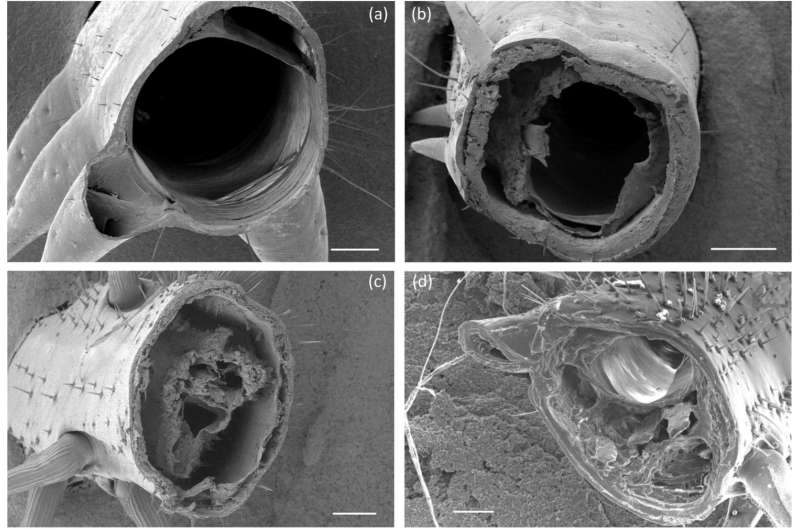SEM images showing cross sections of the locust hind-leg (a), locust mid-leg (b), American Cockroach hind-leg (c) and Death's Head Cockroach hind-leg (d). All scale bars measure 200 μm. Credit: Eoin Parle
Insect tibias are best suited to withstand the high stress of emergency behaviors rather than the fatigue stress of normal behaviors, according a study published August 3, 2016 in the open-access journal PLOS ONE by Eoin Parle from Trinity College, Ireland, and colleagues.
Insect legs need to withstand the fatigue stress of normal activities such as walking and running, as well as the acute stress of emergency activities such as jumping, righting when overturned, and escaping from tight spaces. To determine to which type of activity the exoskeletons of insect legs are best adapted, Parle and colleagues investigated the biomechanics of tibias from three insects—desert locust, American cockroach, and Death's Head cockroach—with different sizes, shapes, and functions. The researchers measured the force required to bend the tibias and used existing data to determine the stresses of common activities such as walking, running and jumping.
Bending tests showed that all the tibia exoskeletons were the same strength. Although the insects included in the study varied in size, shape, and emergency behaviors, the researchers suggest their findings could indicate that the insect limbs may have evolved to a point where they are nearly optimal.
"All insects are not created equal," said Eoin Parle. "Daily stresses experienced by the legs of three different insect species are measured against their failure strengths - the safety factors obtained show how the form and material properties have evolved in response to each leg's individual mechanical function."
More information: Parle E, Larmon H, Taylor D (2016) Biomechanical Factors in the Adaptations of Insect Tibia Cuticle. PLoS ONE 11(8): e0159262. DOI: 10.1371/journal.pone.0159262
Journal information: PLoS ONE
Provided by Public Library of Science























